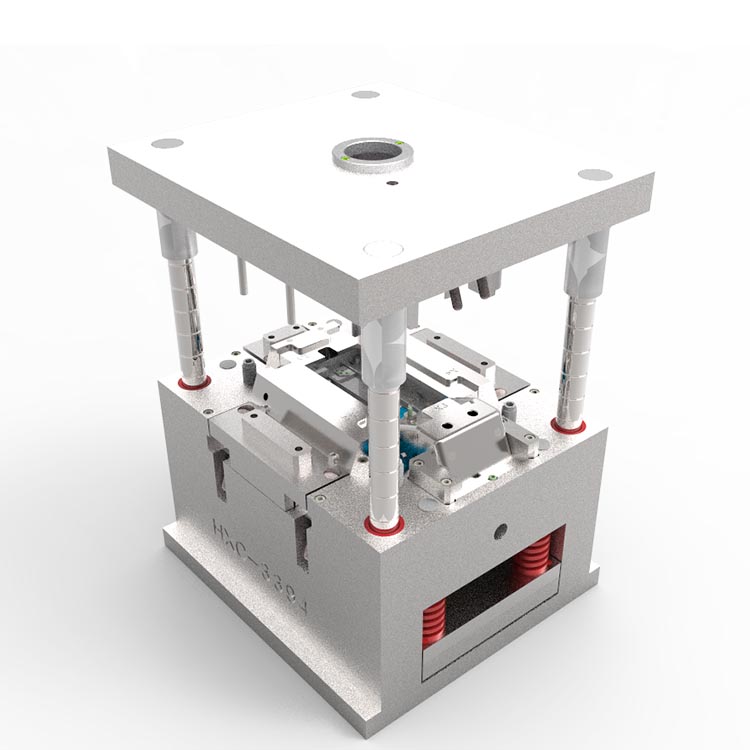How can we use this type of diversion mold more reasonably? What aspects should we start from?

1. Strictly implement the production process regulations for aluminum profiles
It is necessary to strictly follow the corresponding aluminum profile extrusion process. During the start-up process, the temperature of the middle section of the aluminum rod furnace is set at 530-550 ℃, and the temperature of the outlet section is set at 480-500 ℃. The insulation time should be sufficient to ensure that the aluminum rod is warm and transparent (i.e., the center and surface are warm enough), to avoid increasing the elastic deformation of the mold due to the inconsistent temperature of the aluminum rod (insufficient temperature in the center), which will exacerbate the phenomenon of “wall deviation” and “length inconsistency”, and even cause plastic deformation and scrapping of the extrusion mold.
2. Ensure “three hearts in one”
The center of the extrusion cylinder, the center of the extrusion rod, and the center of the mold seat must be visually concentric, and no obvious eccentricity is allowed. Otherwise, it will affect the flow rate of the product at all points, and even affect the molding of the product or make the difference in length between the left and right branches of the extrusion product even greater, making it impossible to produce extrusion.
3. Reasonable selection of support pads
It is necessary to choose a double hole special support pad of appropriate size to reduce the elastic deformation of the lower mold, so as to ensure stable molding of the extruded product and small size changes; And it is necessary to find the double hole special support pad for backup before the mold is taken out of the furnace, in order to avoid the mold cooling too much and causing stuffiness after the mold is taken out of the furnace due to the long time required to find the support pad.
4. Strengthen information feedback during aluminum profile extrusion process
A: Feedback on information of extrusion mold plug mold
There are many reasons for mold blockage, and people who have not received specialized training generally find it difficult to express it clearly. It is best to have the corresponding mold repair personnel personally inspect and find the reason before boiling the mold.
B: Feedback on discharge molding situation
In addition to clearly identifying the extrusion die number on the material head, it is also necessary to indicate the overall flow direction of the material head that is difficult to see on the material head, such as “intersecting discharge” (indicating that it is caused by the slow inner side and fast outer side of the two holes during the actual extrusion process); b. “Separation discharge” (indicating that it is caused by the fast inner side and slow outer side of the two holes during the actual extrusion process); c. “Left long and right short” indicates that the left branch is long and the right branch is short, and the difference in length should be indicated. Because the distance from the interrupted saw to the discharge port is about 6 meters, the usual form of “A meter/6 meter” indicates that the difference in length is A meter every 6 meters. This perfect and accurate expression is conducive to the correct judgment and maintenance of the mold repair personnel.
C: Feedback on size deviation information
When encountering situations where the discharge molding is normal but the size exceeds the tolerance, it is necessary to take a section of the sample and make complete and correct identification (extrusion mold number, discharge direction, size defect, etc.). Any incorrect identification may lead to the repair of the wrong mold, so high attention must be paid.
Only with such complete feedback on usage information can it be beneficial for mold repair personnel to make correct judgments and repairs, improve the efficiency of mold maintenance, reduce the number of mold repairs and unnecessary mold trials.
5. Mold damage inspection
① The materials used to manufacture molded parts are not suitable for working conditions, resulting in deformation, corrosion, or severe wear and tear of the mold after working for a period of time.
② When installing or disassembling parts in the forming mold, striking the parts with a hammer can cause deformation or damage to the smooth surface of the mold parts, and there may be impact marks on the working surface.
③ The angle of the diversion cone is too large, which increases the resistance to the flow of molten material and causes the support ribs of the diversion cone to break.
④ The working surface hardness of the mouth mold and core shaft is low, causing severe wear on the smooth surface and resulting in surface roughness.
⑤ When adjusting the mold, errors in the working degree can cause the mold adjustment screw to break, the mouth mold or the fixed diameter sleeve to deform, and cannot be used
